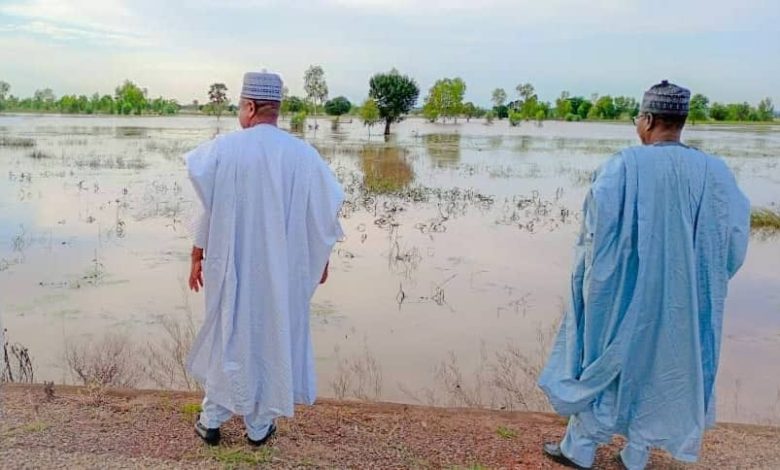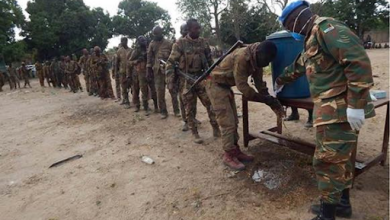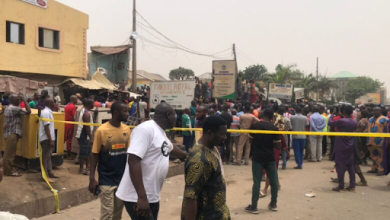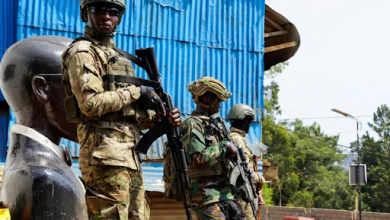Unprecedented Flooding Destroys Farmlands, Houses Across Sub-Saharan Africa

Prolonged torrential rainfall in Niger Republic since July rapidly increased the water level in River Niger and submerged parts of the country, including the capital, Niamey.
According to the General Direction of Civil Protection in Niger Republic, flooding affected more than 283,000 people, left 51 dead and 71 injured as of the end of August.
The United Nations Office for the Coordination of Humanitarian Affairs (OCHA) in the country estimated that 20,201 houses were destroyed, 4,295 ruminants killed and 5,306 farms destroyed in Maradi, Tahoua and Dosso.
Subsequently, the hydrological services agency in neighbouring Nigeria, downstream of the Niger River, raised the alarm on flood risk and advised states to prepare for flood in communities along the river.
The agency added that the flood magnitude sighted in Niamey was expected to arrive in Nigeria through Kebbi State around September 6.
Floodwaters arrived Kebbi state, northwestern Nigeria, much earlier than expected.
In the past few days, the state government and Nigeria Emergency Management Agency (NEMA) have conducted assessment visits to areas ravaged by floodwaters.
According to the Attahiru Maccido, the Kebbi State Commissioner for Agriculture, about one billion naira worth of rice and other farms have been destroyed in the state, when floodwater submerged thousands of hectares of farmlands.
Mohammed Sahabi, the state Chairman of Rice Farmers Association of Nigeria, told Bloomberg, that at least 450,000 hectares (1.2 million acres) were destroyed in Kebbi, Nigeria’s main rice-growing state.
Nigeria’s President Muhammadu Buhari on September 6, in a series of tweets, expressed his concern with the devastation.
” I am particularly saddened by the Kebbi flooding disaster, which has led to the loss of lives and destruction of thousands of hectares of farmland. It is a major setback to our efforts to boost local rice production as part of measures to end importation”.
The Air Force and NEMA have conducted flood assessment of flood plains along the River Niger from Kebbi to the confluence state of Kogi, where the River Niger meets River Benue.
The assessment involved the use of Intelligence, surveillance and reconnaissance aircraft to fly over the River Niger path.
In Senegal, authorities have initiated an emergency flood aid plan after severe rainfall since September 5 caused flooding in Dakar.
During a national briefing, Senegal’s Water Minister Serigne Mbaye Thiam said the rain that fell on Saturday was “exceptional”, and the amount more than what the country would usually receive during three months of the rainy season.
“This is an exceptional rainfall. We registered 124 millimetres of rain. This is the cumulative rain we get during the whole rainy season from July to September” according to local media.
Associated Press reported that thousands of people were forced out of their homes in Senegal’s capital, Dakar, on Monday, September 7, after a storm brought nearly a year’s worth of rain in a single day over the weekend.
“Meteorologists are forecasting more rain this week, raising concerns of increased flooding in rapidly growing Dakar where drainage capacity from homes and roads is often poor,” the report said.
In Sudan, Qatari based Aljazeera has reported that authorities in Sudan have declared a national state of emergency for three months and designated the country a natural disaster zone after flooding that has killed dozens of people.
Lena el-Sheikh, Sudan’s Minister of Labour and Social Development, was quoted to have said that in addition to 99 deaths, floods this year had injured 46 people, inflicted damage on more than half a million people and caused the total and partial collapse of more than 100,000 homes.
The torrential rains mostly in Ethiopia have caused the Nile to overflow downstream in Sudan.
The authorities in Sudan have warned that the water level in the Blue Nile rose to a record 17.57m, breaking all records since measurements began more than a century ago.
The UN humanitarian organisation, OCHA, also warned that the situation could deteriorate over the coming days as heavy rains forecast in Ethiopia and several parts of Sudan would likely cause further increase of water levels in the Blue Nile, leading to more flooding and destruction.
Support Our Journalism
There are millions of ordinary people affected by conflict in Africa whose stories are missing in the mainstream media. HumAngle is determined to tell those challenging and under-reported stories, hoping that the people impacted by these conflicts will find the safety and security they deserve.
To ensure that we continue to provide public service coverage, we have a small favour to ask you. We want you to be part of our journalistic endeavour by contributing a token to us.
Your donation will further promote a robust, free, and independent media.
Donate HereStay Closer To The Stories That Matter




